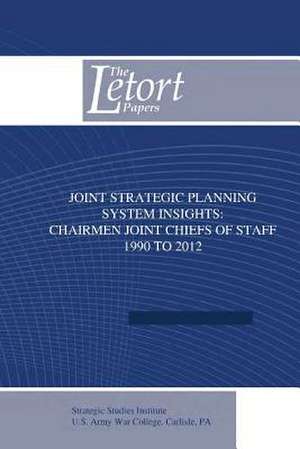Joint Strategic Planning System Insights
Autor Strategic Studies Institute U. S. Army Wa, Strategic Studies Institute U. S. Army W.en Limba Engleză Paperback
Preț: 91.55 lei
Nou
Puncte Express: 137
Preț estimativ în valută:
17.52€ • 19.04$ • 14.73£
17.52€ • 19.04$ • 14.73£
Carte disponibilă
Livrare economică 31 martie-14 aprilie
Preluare comenzi: 021 569.72.76
Specificații
ISBN-13: 9781500368449
ISBN-10: 150036844X
Pagini: 38
Dimensiuni: 152 x 229 x 2 mm
Greutate: 0.06 kg
Editura: CREATESPACE
ISBN-10: 150036844X
Pagini: 38
Dimensiuni: 152 x 229 x 2 mm
Greutate: 0.06 kg
Editura: CREATESPACE
